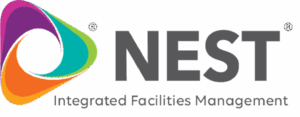Key Takeaways
1. SOC 1 Reports Evaluate Internal Controls Related to Financial Reporting: These reports are essential for service organizations that may impact their clients’ financial statements.
2. There Are Two Types of SOC 1 Reports—Type I and Type II: SOC 1 Type I assesses whether the description is fairly presented and control design at a single point in time, while SOC 1 Type II evaluates the description, design, and operating effectiveness over a period of time (usually 6–12 months).
3. Achieving SOC 1 Compliance Builds Trust and Strengthens Internal Processes: By aligning with core SOC 1 requirements, organizations can position themselves as a secure, reliable partner—especially in the finance, HR, and technology sectors.
If your organization provides services that could impact a client’s financial reporting, chances are you’ve heard of a System and Organization Controls 1 (SOC 1) report. Developed by the American Institute of Certified Public Accountants (AICPA), SOC 1 is a third-party attestation engagement designed to help service providers demonstrate that they have the appropriate internal controls in place to address risks and processes that might impact their clients financial reporting. Whether you’re preparing for your first audit or strengthening your compliance program, understanding SOC 1 is critical.
In this blog, we’ll explore what SOC 1 is, who it applies to, the key requirements, and the difference between SOC 1 Type I and SOC 1 Type II reports.
What Is SOC 1?
SOC 1 is built on a compliance standard that evaluates how well a service organization’s internal controls support the financial reporting needs of its clients. It differs from SOC 2 and SOC 3, which focus on the Trust Services Criteria. SOC 1 is most relevant to businesses whose services could affect a customer’s financial statements—such as payroll processors, claims administrators, SaaS companies offering accounting software, or third-party logistics providers.
SOC 1 is governed by the AICPA and follows the Statement on Standards for Attestation Engagements (SSAE) No. 18, which requires service organizations to maintain effective internal controls over financial reporting (ICFR). This is clarified under section AT-C 320: “Reporting on an Examination of Controls at a Service Organization Relevant to User Entities’ Internal Control Over Financial Reporting”
Generally speaking, SOC 1 compliance is required by:
- Third-party service providers that process or handle client financial data
- Outsourced payroll and HR services
- Financial technology (fintech) platforms
- Claims processing firms
- Loan servicing and billing companies
If your services could influence a customer’s financial reporting accuracy or timing, they may request a SOC 1 report to ensure you are managing risk appropriately.

Core SOC 1 Requirements
To achieve SOC 1 compliance, a service organization must implement and maintain internal controls that are relevant to its clients’ financial reporting. These controls generally cover:
- Control environment: Assessing a business’s structure, policies, standards, and processes
- Risk assessment: Identifying and evaluating relevant financial reporting risks
- Control activities: Implementing measures to mitigate those risks (e.g., access controls, segregation of duties)
- Information and communication: Ensuring accurate reporting, documentation, and training
- Monitoring: Regular review and testing of controls to ensure ongoing effectiveness
The specifics of these controls will vary depending on the nature of the services provided.
What Is a SOC 1 Type II Report? And How Does It Differ from SOC 1 Type I?
There are two types of SOC 1 reports, and understanding the difference is essential for selecting the right level of assurance.
SOC 1 Type I reports evaluate the design of controls at a specific point in time. Think of this report as a way to answer the question, “Are the necessary controls in place today?” It’s typically used as a starting point for organizations that are new to SOC 1 compliance, and it can often be useful for internal stakeholders or customers during onboarding.
By contrast, SOC 1 Type II reports evaluate both the design (Type I) and operating effectiveness of controls over a period of time (usually 6–12 months). This type of report is designed to answer the question, “Did the controls operate effectively over time?” SOC 1 Type II reports are required by most enterprise clients for annual vendor due diligence as they help to demonstrate mature, sustainable compliance practices.
While SOC 1 Type I is useful for early-stage assurance, the SOC 1 Type II report carries significantly more weight for ongoing trust and partnership—especially in industries like finance, healthcare, and government contracting.
Why SOC 1 Compliance Matters
SOC 1 compliance helps organizations build trust with clients by validating internal controls. It can be used to improve internal processes and risk management while satisfying vendor due diligence and audit requirements. An effective SOC 1 report can even help organizations gain a competitive advantage in highly regulated industries, as it gives customers confidence that their financial data is in good hands.
Whether you’re preparing for your first SOC 1 audit or aiming for a SOC 1 Type II report, understanding the basics of SOC 1 compliance is essential. By implementing strong internal controls and engaging with an experienced SOC auditor, your organization can demonstrate its commitment to financial integrity and client trust.
IS Partners is the leading SOC 1 Provider, trusted by brands like Tommy Hilfiger, Shutterfly, and Blue Cross Blue Shield. We bring over 20 years of SOC 1 and SOC 2 audit experience to the table, and we specialize in fast onboarding, accurate control mapping, and transparent SOC 1 reporting.
Explore our SOC 1 compliance services today to discover how we can help you affirm your SOC 1 compliance with a readiness assessment and gap analysis tailored to your business.
What Should You Do Next?
Assess Whether Your Services Impact Client Financial Reporting: If they do, initiate a SOC 1 readiness assessment to identify gaps in your current control environment.
Determine the Correct Report Type (Type I or Type II): Based on your current maturity level, contractual commitments, and stakeholder requirements, identify the correct report type for your needs. If you’re new to SOC 1 compliance, we recommend starting with a readiness assessment, then moving to a Type I report and planning to progress to a Type II at least annually.
Engage a Qualified SOC Compliance Consultant: Find an experienced partner to guide you through the audit process and help you prepare the documentation and controls needed for a successful engagement.









